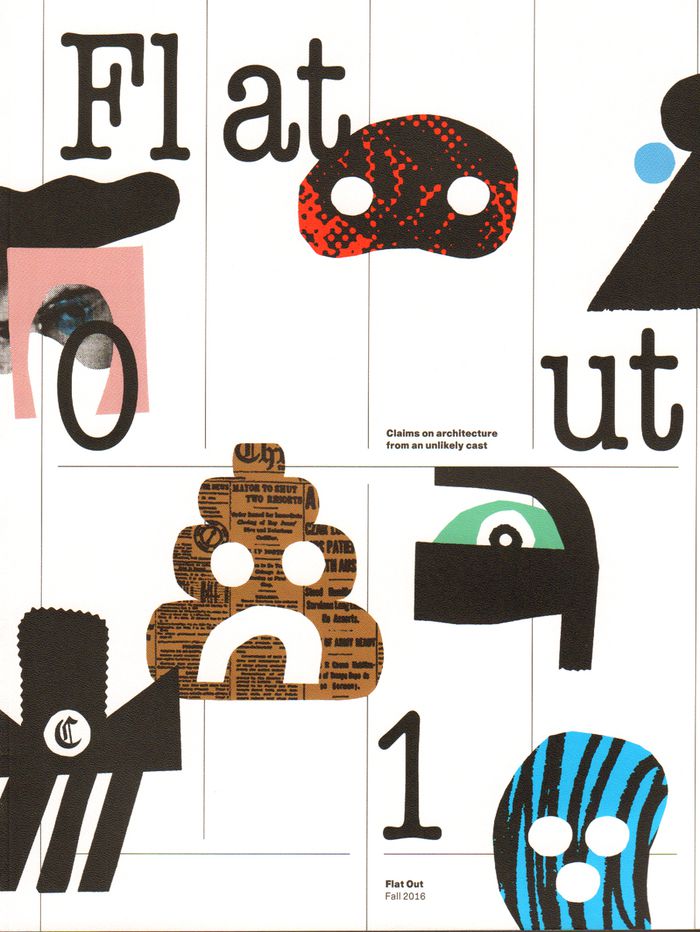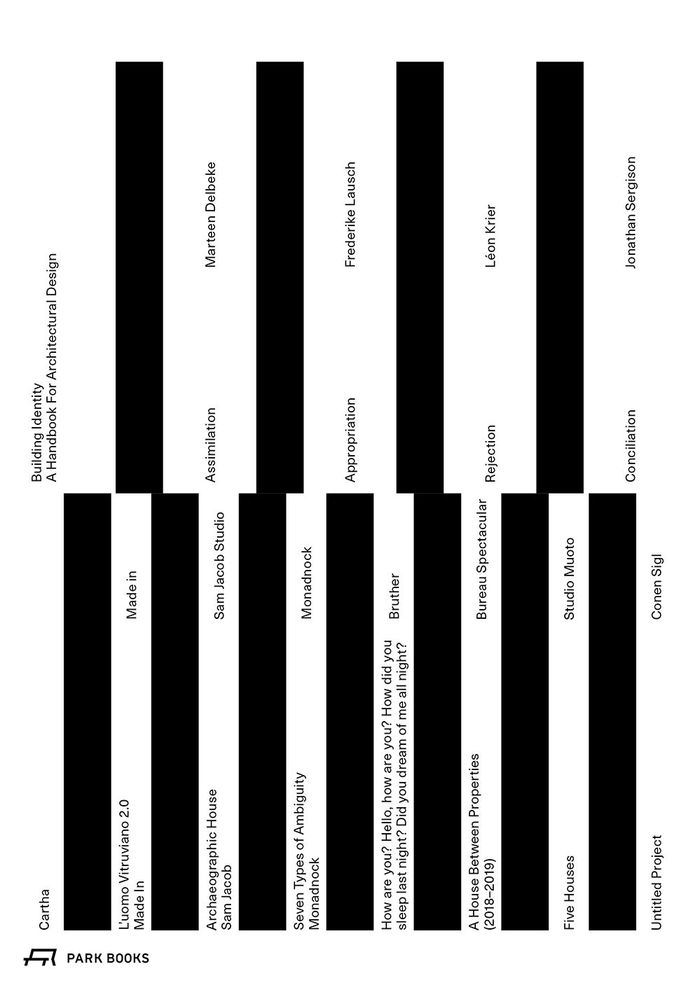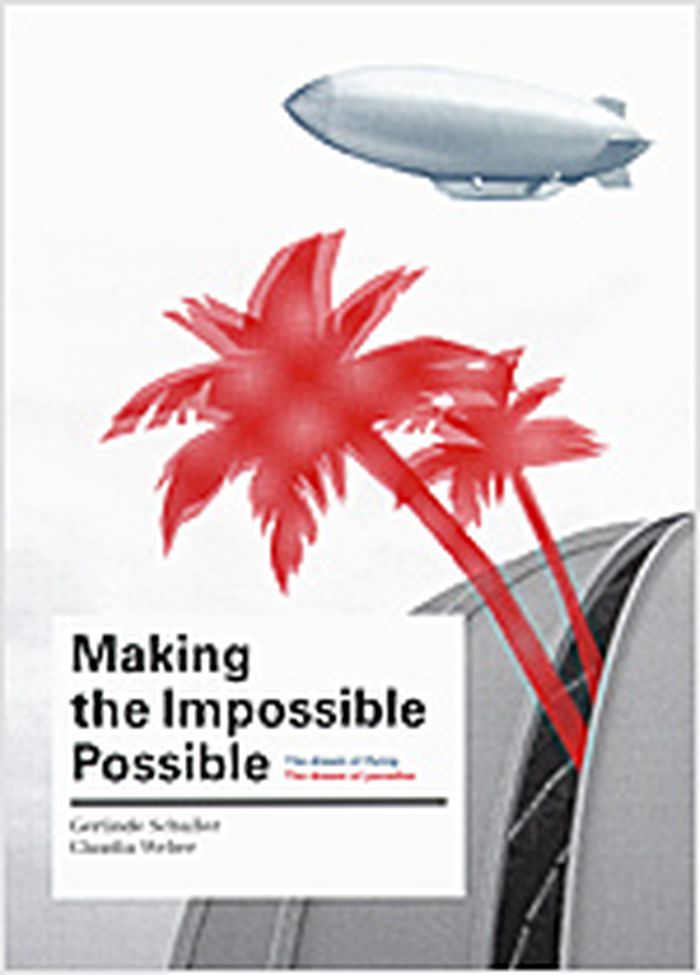$26.50
(available to order)
Summary:
"Flat Out 1" yields unlikely connections between subjects as diverse as lists, numbers, chairs, and death. In “Dear Renato,” The Challenger writes a letter to Italian architect Renato Rizzi on the darkness of his Shakespeare Theater. The Genealogist, in “Get the Door, It’s Domino’s,” dives into the pizza company’s trophy awards for architects. The Mortician prepares New(...)
Flat Out : claims on architecture from an unlikely cast
Actions:
Price:
$26.50
(available to order)
Summary:
"Flat Out 1" yields unlikely connections between subjects as diverse as lists, numbers, chairs, and death. In “Dear Renato,” The Challenger writes a letter to Italian architect Renato Rizzi on the darkness of his Shakespeare Theater. The Genealogist, in “Get the Door, It’s Domino’s,” dives into the pizza company’s trophy awards for architects. The Mortician prepares New Brutalism for the afterlife, while The Graphic Essayist fills columns with new orders. In “Easier Done than Said” an editorial board member appears as The Cameo to make much ado about the reception of the inaugural Chicago Architectural Biennial. The cast for this issue features (in order of appearance) Pier Paolo Tamburelli, Jayne Kelley, Alexander Eisenschmidt, Sam Jacob, Robert Bruegmann, Paul Andersen, Jon Langford, Ellen Grimes, John McMorrough, Ania Jaworska, Zehra Ahmed, R. E. Somol, Penelope Dean, and Julia Di Castri. Character portraits are by Cody Hudson.
Magazines
CARTHA: Building identity
$49.95
(available in store)
Summary:
In their new book, the international CARTHA network engages with the question of forming identity in society and the role that architecture plays in this process. Inspired by Jacques Lacan’s approach from psychoanalysis, CARTHA’s members break down the identity-formation process into four sub-steps, which they explore in interviews: Maarten Delbeke, professor of history(...)
Architectural Theory
August 2024
CARTHA: Building identity
Actions:
Price:
$49.95
(available in store)
Summary:
In their new book, the international CARTHA network engages with the question of forming identity in society and the role that architecture plays in this process. Inspired by Jacques Lacan’s approach from psychoanalysis, CARTHA’s members break down the identity-formation process into four sub-steps, which they explore in interviews: Maarten Delbeke, professor of history and theory of architecture at ETH Zurich, talks about ''Assimilation''; Frederike Lausch, researcher at TU Darmstadt’s Department of Architecture, about ''Appropriation''; Rob Krier, Berlin and Liguria-based architect and sculptor, about ''Denial'', and Jonathan Sergison, London-based architect, about ''Reconciliation''. These conversations make up the cornerstones for a new, experimental design methodology, which has been tested in practice by architecture firms Bruther (Bordeaux), Bureau Spectacular (Los Angeles), Conen Sigl (Zurich), Made In (Geneva / Zurich), Monadnock (Rotterdam), Studio Muoto (Paris), and Sam Jacob Studio (London). ''CARTHA—Building Identity'' features a variety of buildings—houses, cottages, apartments—designed in the context of these insights.
Architectural Theory
$61.50
(available to order)
Summary:
The book documents a unique accumulation of superlatives. Light is shed on two business strategies attempting to realise mankind’s pri- mordial dreams. The scene is the world’s largest self-supporting hall in a small village close to Berlin. At the end of the 1990s, the firm CargoLifter AG attracted international attention with its vision of(...)
Architecture since 1900, Europe
July 2006, Amsterdam
Making the impossible possible : the dream flying the dream of paradise
Actions:
Price:
$61.50
(available to order)
Summary:
The book documents a unique accumulation of superlatives. Light is shed on two business strategies attempting to realise mankind’s pri- mordial dreams. The scene is the world’s largest self-supporting hall in a small village close to Berlin. At the end of the 1990s, the firm CargoLifter AG attracted international attention with its vision of con- structing the world’s largest heavy-lift airship. By building an architecturally outstanding hangar, the company demonstrated pioneering spirit and gave rise to huge media response. After the enterprise failed, the hall was sold to a consortium of Asian firms that then presented the next superlative. The former hangar was converted into the Tropical Islands Dome, Europe’s largest indoor tropical paradise. The authors Gerlinde Schuller (Information Design Studio, Amsterdam) and Claudia Weber (artist, Berlin) compare these two visions on their paths to implementation, while simultaneously putting them in the context of current international events. The documentation is supplemented with text contributions by: Sam Jacob (FAT Ltd., London), Dingeman Kuilman (Premsela Design Foundation, Amsterdam), Jochen Becker (critic and curator, Berlin) and Prof. Dr. Bernd Kriegesmann (Institute for Applied Innovation Research, Bochum).
Architecture since 1900, Europe


